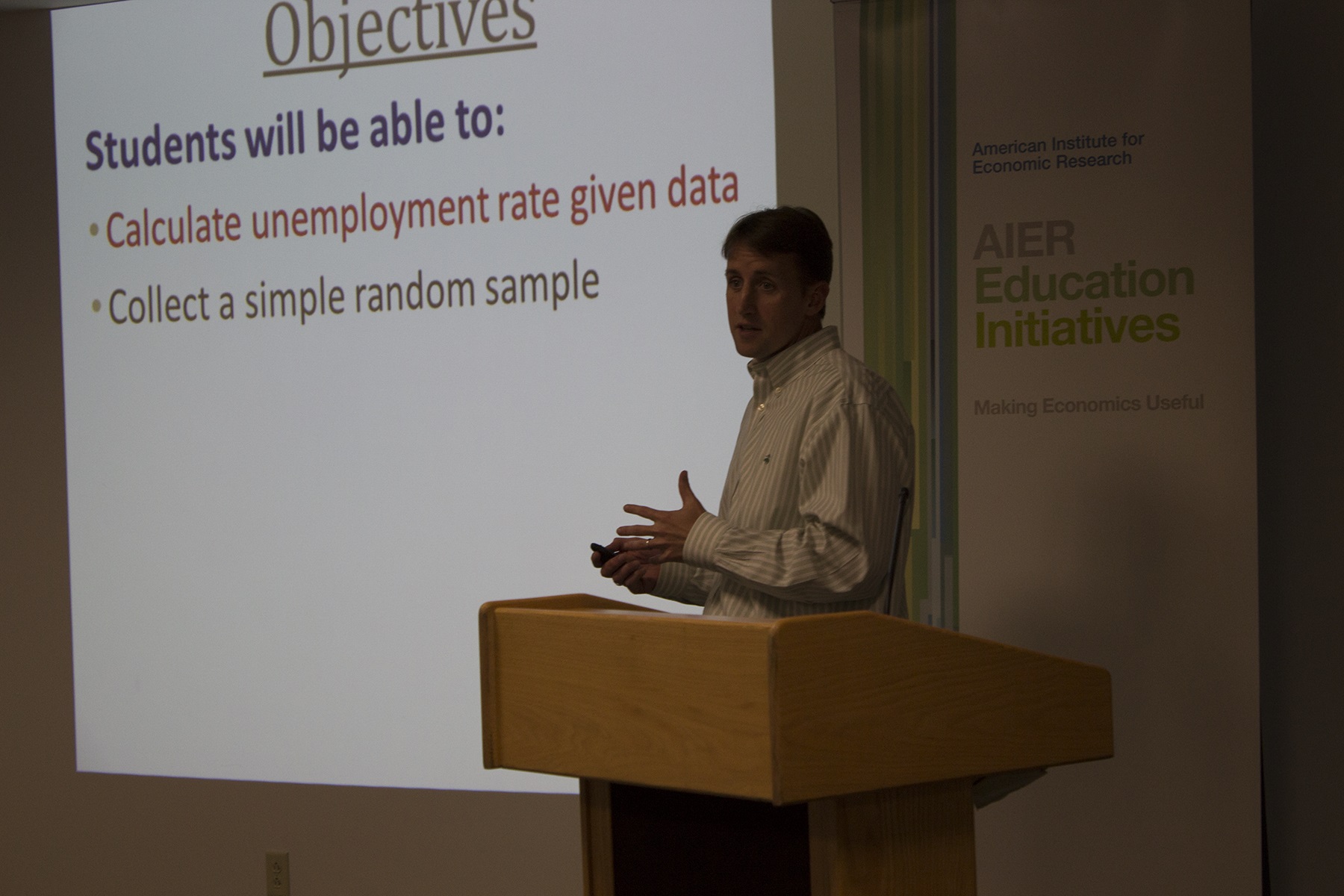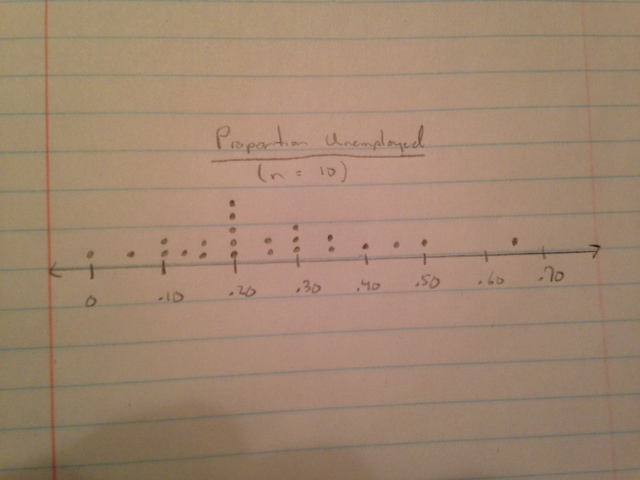Teaching Random Sampling to High School Students
Thomas McCormick, math teacher in Lee, Massachusetts
Seventeen teachers from six states gathered in Great Barrington, Massachusetts last month for an intensive five-day training session in economics education. Here at the American Institute for Economic Research, our Teach-the-Teachers program encourages teachers to integrate economic concepts into various fields of study. At the end of the program, each teacher presented an idea to apply one economic concept in their home classroom.
I want to tell you about one exciting lesson idea — the unemployment lesson adapted to be taught in the AP Statistics class by Thomas McCormack, the math teacher from Lee Middle and High School in Lee, Massachusetts.
This fall, students will first research how the federal government gathers data to determine the unemployment rate, and discuss appropriate sampling methods. Then each student will receive an employment status card (a retiree, a full-time student, a laid-off person, etc.) to role-play during the survey reporting activity. Each student will also sample 10 classmates at random, chosen by a computer.
After the discussion of the definitions of employed, unemployed, and not in labor force, each student will calculate the unemployment rate for their sample. The data then will be graphed to illustrate the outcome. Based on the sample’s unemployment rate, students will predict the unemployment rate for the whole population, and then compare this prediction with the actual unemployment rate defined by the teacher for this activity.
The application of this role-play activity to the explanation of the random sampling in a statistics class is a teaching innovation. We are excited to be invited for observation.
Thomas McCormack envisioned that the activity’s survey results will follow normal distribution.
You can get the Daily Economy email roundup every Friday in your email inbox. Just send a request to info@aier.org.










